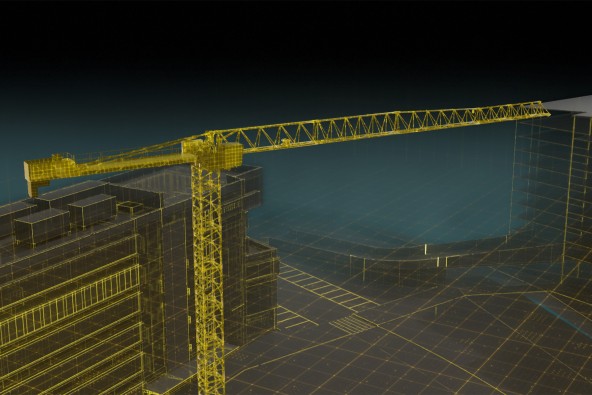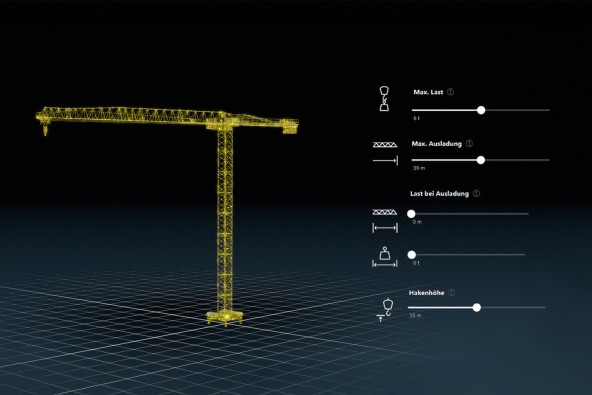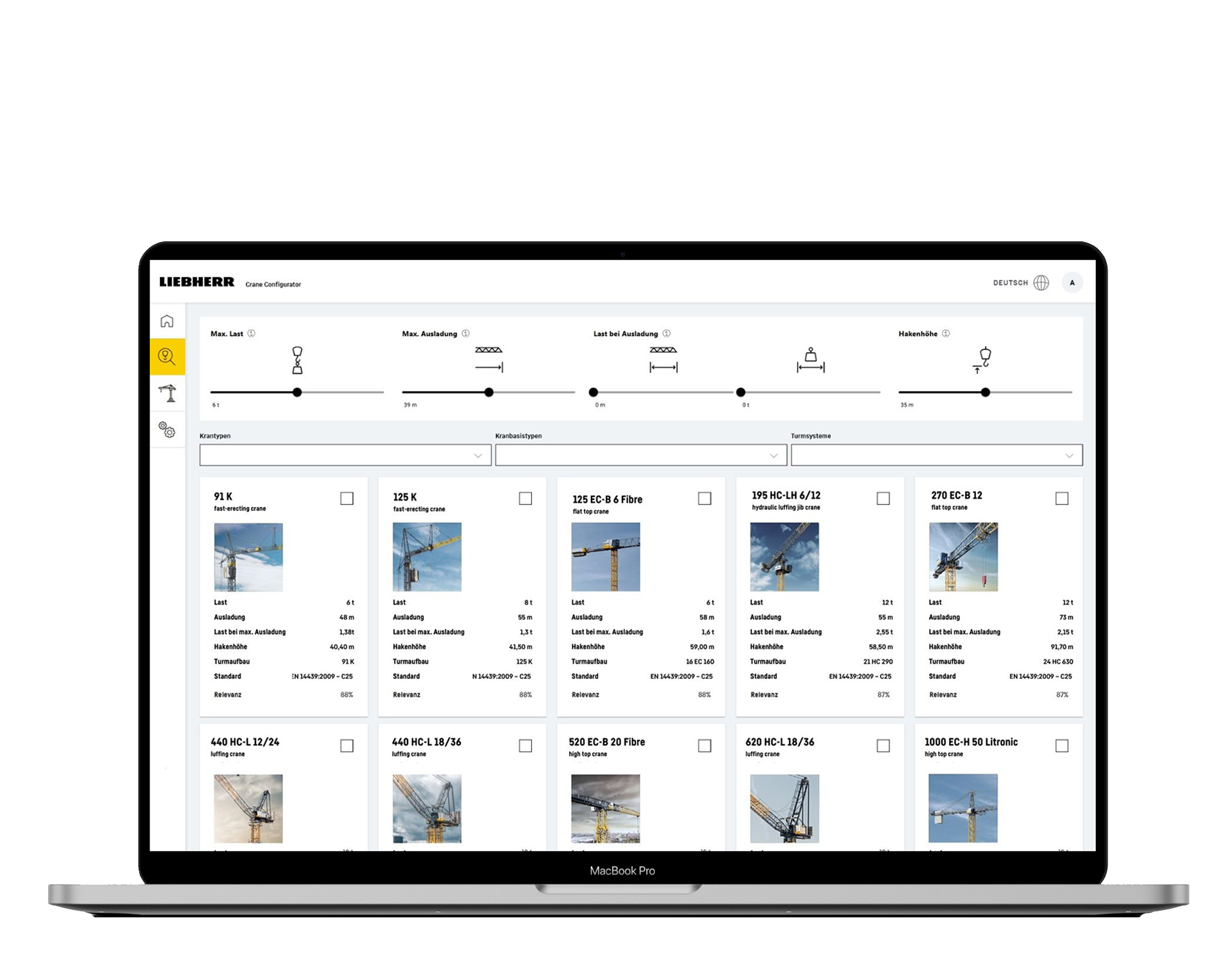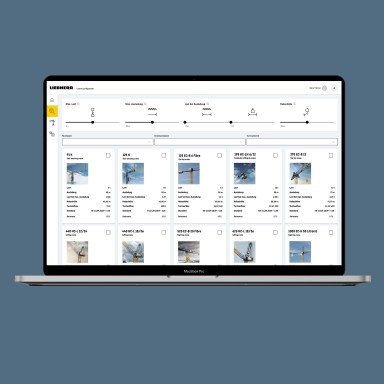Construction site planning
The planning of tower crane jobs is set to be made easier through the availability of specific and detailed crane data and geometric crane models. We are offering our customers the Crane Configurator for easy site planning so that the planning phase is made as convenient as possible.

Integration into current planning environments
Via a web application, users can select the most suitable crane from the provided product portfolio and integrate this into planning environments in IFC (Industry Foundation Classes) format. This globally recognised standard makes it possible to digitally describe the structure, properties and optical geometry of building models. The format is supported by diverse software for exchanging data between construction software systems.

Intuitive planning and selection of the right crane model
The Crane Configurator features an intuitive search function for the most suitable crane model, which is supported by individually configurable filters for specific construction site and crane requirements.
The crane model geometry is optimised for BIM (Building Information Modelling) based planning. This networked planning means that all relevant building data is digitally modelled and captured. Additional geometric information and planning-relevant details relating to the crane model and its components ensure that Liebherr cranes fit perfectly into the digital planning environment.
Crane models can be saved as favourites, tagged and shared with other users. At Bauma 2025, customers will have the chance to experience the Crane Configurator with the Liebherr tower cranes on display at the trade show. Current cranes will be added to the selection available throughout the year. Planning-relevant crane models that are no longer part of the current product portfolio have also been included.
Start your crane configuration
Digitalisation in construction planning – the key terms
What exactly does BIM mean and what can I use Crane Information Models for? Take a look at the key terms used in digital construction planning.
- IFC
- BIM
- CIM
- CDE
An IFC file is a model file created in Industry Foundation Classes (IFC) format – an open file format used by Building Information Modelling (BIM) programs. It contains a data-driven model of a construction machine, building or facility, including its shape, spatial elements and materials used, as well as their associated properties (attributes).
IFC allows complex 3D models, including planning data, building elements and their descriptive attributes, to be transferred between different CAD systems in a common format.
An IFC file is a model file created in Industry Foundation Classes (IFC) format – an open file format used by Building Information Modelling (BIM) programs. It contains a data-driven model of a construction machine, building or facility, including its shape, spatial elements and materials used, as well as their associated properties (attributes).
IFC allows complex 3D models, including planning data, building elements and their descriptive attributes, to be transferred between different CAD systems in a common format.





